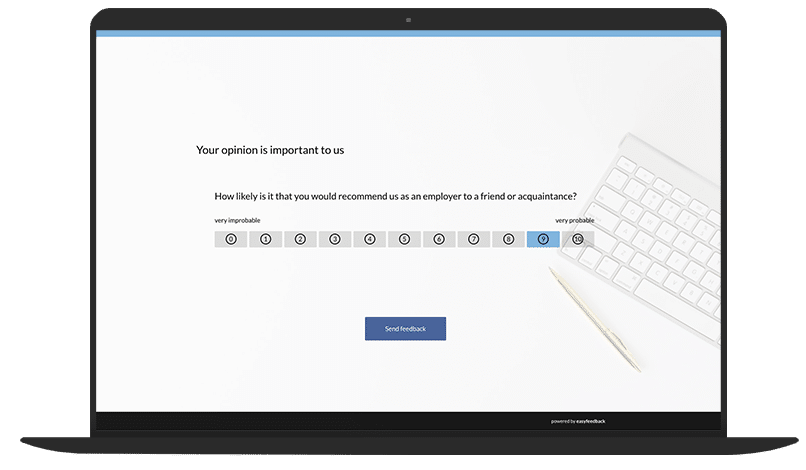What are KPIs?
KPIs, or Key Performance Indicators, are measurable values that allow companies to evaluate progress towards specific goals.
In the context of employee retention, KPIs serve as important tools to quantify employee engagement and satisfaction.
By analyzing these KPIs, companies can take targeted measures to improve employee retention and create a positive working environment.

Key figure 1: Employee turnover rate
The employee turnover rate is one of the most fundamental KPIs for employee retention.
It measures the percentage of employees who leave the company within a certain period of time.
A high turnover rate can indicate dissatisfaction, a lack of development opportunities or a poor working atmosphere.
Companies should regularly monitor and analyze this key figure in order to identify the causes of fluctuation and take appropriate measures.
Key figure 2: Employee satisfaction index
The employee satisfaction index is often determined through surveys in which employees rate their satisfaction with various aspects of their work.
This index is a valuable indicator of the general well-being of employees.
High satisfaction scores are often associated with a higher level of loyalty to the company.
Regular surveys enable companies to identify trends in employee satisfaction and react accordingly.
Key figure 3: Engagement score
The engagement score measures how committed and motivated employees are in their work.
A high engagement score is directly linked to greater employee loyalty.
Companies can determine the engagement score using various methods, such as surveys, feedback interviews or by analyzing performance data.
Measures to promote engagement, such as training and development opportunities, can help to increase employee retention.
Key figure 4: Employee Net Promoter Score (eNPS)
The Employee Net Promoter Score is often used to measure employee loyalty.
The question asked here is how likely it is that an employee would recommend the company to a friend or colleague.
A high eNPS is a positive sign of employee loyalty and shows that employees are proud of their company and identify with its values.

Key figure 5: Absenteeism rate
A high absenteeism rate can indicate dissatisfaction or health problems.
It can also be linked to employee retention.
Companies should analyze their employees’ absenteeism in order to identify potential problems at an early stage and take appropriate measures to support employees, such as health promotion programs or flexible working hours.
Key figure 6: Training and development opportunities
The proportion of employees who participate in training and development programs can be an important KPI for employee retention.
Employees who have the opportunity to develop professionally and learn new skills tend to be more loyal to their company.
Providing training and development opportunities should therefore be a key part of the company strategy.
Conclusion
Analyzing KPIs in employee retention is an essential step for companies looking to promote a positive company culture and increase employee loyalty.
By continuously monitoring and improving these metrics, companies can not only increase employee satisfaction and engagement, but also remain successful in the long term.
At a time when competition for talent is increasing, it is essential to take the needs and expectations of employees seriously and take appropriate action.
More about employee retention
- Employee Loyalty: a key to corporate success
- 6 methods to measure employee retention
- Employee Net Promotor Score (eNPS): measuring employee loyalty
- 6 pillars of employee retention
- 8 measures to increase employee retention
- The turnover rate: a key figure for measuring employee retention
- How surveys can help reduce employee turnover!
- The sickness absence rate: an indicator of employee loyalty
- How surveys can help reduce the sickness rate!





